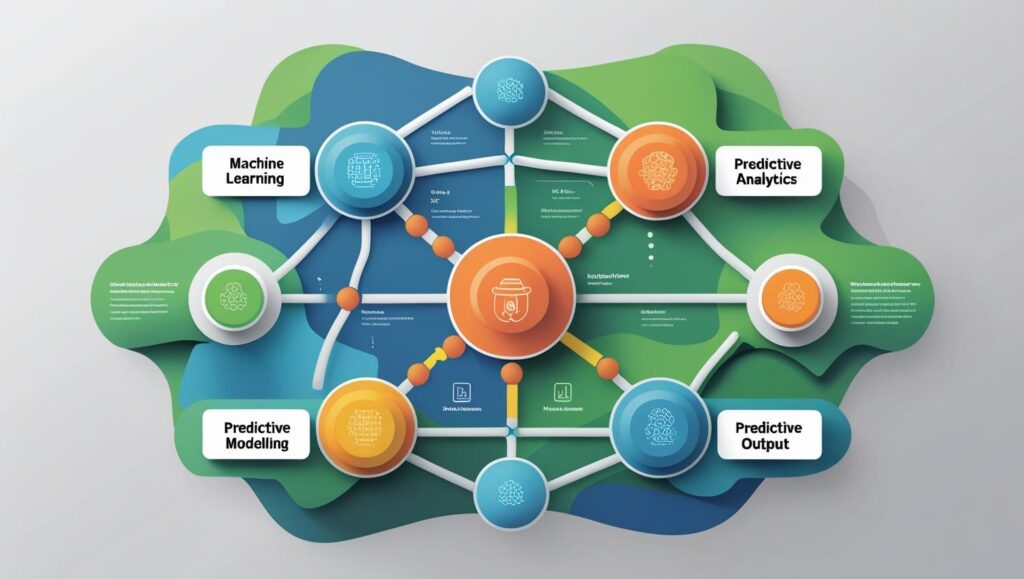How Machine Learning Powers Predictive Analytics
In today’s data-rich world, businesses and organizations are no longer content with simply understanding what has happened; they want to know what will happen. This drive to peer into the future, to anticipate trends, identify risks, and seize opportunities, is the essence of **predictive analytics**. And at the very heart of this powerful capability lies **machine learning**. Far from being a futuristic concept, machine learning algorithms are the engines that transform historical data into actionable insights, enabling everything from personalized recommendations to proactive maintenance. If you’ve ever wondered how companies forecast consumer behavior, predict equipment failures, or optimize complex operations, then understanding **how machine learning powers predictive analytics** is crucial. This comprehensive guide will demystify the core concepts, explore the types of algorithms involved, and highlight real-world applications where this synergy is reshaping industries and decision-making.
—
Understanding Predictive Analytics: Beyond Historical Data
Predictive analytics is a branch of advanced analytics that uses various techniques, including statistical modeling, data mining, and machine learning, to analyze current and historical facts to make predictions about future or otherwise unknown events. Unlike descriptive analytics (what happened) or diagnostic analytics (why it happened), predictive analytics focuses on the “what will happen” question.
The Goal of Predictive Analytics
The primary goal is to provide a best assessment of what will happen in the future, allowing organizations to make proactive, data-driven decisions. This can involve:
- Forecasting: Predicting future sales, demand, or market trends.
- Risk Assessment: Identifying potential fraud, credit defaults, or equipment failures.
- Optimization: Improving resource allocation, supply chain efficiency, or marketing campaign effectiveness.
- Personalization: Recommending products, content, or services tailored to individual users.
—
The Role of Machine Learning: Learning from Data
While traditional statistical methods can perform predictions, machine learning offers unparalleled power, flexibility, and scalability. Machine learning algorithms “learn” from data without being explicitly programmed. They identify patterns, relationships, and trends within historical datasets and then apply this learned knowledge to new, unseen data to make predictions or decisions.
How Machine Learning Enables Prediction
Think of it this way: a machine learning model is trained on a vast amount of past data (e.g., customer demographics, purchase history, website clicks). During this training, the algorithm develops an understanding of the underlying patterns that connect inputs (features) to outputs (the prediction target). Once trained, when presented with new input data, the model uses its learned patterns to generate a prediction.
The beauty of machine learning lies in its ability to handle complex, high-dimensional data and uncover non-obvious relationships that would be impossible for humans to discern manually.
—
Key Machine Learning Algorithms for Predictive Analytics
A variety of machine learning algorithms are employed in predictive analytics, each suited for different types of data and prediction goals. Here are some of the most common and powerful ones:
1. Regression Algorithms
These are used when the prediction target is a continuous numerical value. For example, predicting house prices, stock prices, or temperatures.
- Linear Regression: A foundational algorithm that models the relationship between a dependent variable and one or more independent variables by fitting a linear equation to observed data.
- Polynomial Regression: Used when the relationship between variables is curvilinear.
- Decision Trees & Random Forests (for Regression): Can handle complex, non-linear relationships and are good for understanding feature importance. Random Forests combine multiple decision trees for improved accuracy and robustness.
- Support Vector Regression (SVR): Effective in high-dimensional spaces and cases where the number of dimensions exceeds the number of samples.
2. Classification Algorithms
These are used when the prediction target is a categorical value, meaning predicting which class an item belongs to. Examples include predicting whether a customer will churn (yes/no), classifying emails as spam or not spam, or identifying types of diseases.
- Logistic Regression: Despite its name, it’s a classification algorithm used to estimate the probability of a binary outcome.
- Decision Trees & Random Forests (for Classification): Highly interpretable and versatile for classifying data into categories.
- Support Vector Machines (SVM): Builds a hyperplane in a high-dimensional space that can be used for classification.
- K-Nearest Neighbors (KNN): Classifies data points based on the majority class of their ‘k’ nearest neighbors.
- Naive Bayes: Based on Bayes’ theorem, it’s particularly useful for text classification and spam detection.
3. Clustering Algorithms (for Pattern Discovery)
While not direct prediction algorithms in the same sense as regression or classification, clustering algorithms are crucial for identifying inherent groupings or patterns within data. This can then inform predictive models by segmenting data into more homogeneous groups.
- K-Means Clustering: Partitions data into ‘k’ distinct clusters, where ‘k’ is user-defined.
- Hierarchical Clustering: Builds a hierarchy of clusters.
4. Neural Networks and Deep Learning
These are advanced machine learning models, inspired by the human brain, capable of learning highly complex patterns from vast amounts of data. Deep learning (a subset of machine learning using neural networks with many layers) is particularly powerful for unstructured data like images, text, and audio, but also excels in complex predictive tasks.
- Recurrent Neural Networks (RNNs): Excellent for sequential data (e.g., time series forecasting, natural language processing).
- Convolutional Neural Networks (CNNs): Primarily used for image recognition but can be adapted for other data types.
- Transformers: State-of-the-art models for natural language processing, often used for predicting next words in a sentence or sentiment analysis.
—
Real-World Applications: Where Predictive Analytics Shines
The practical applications of **how machine learning powers predictive analytics** are vast and continually expanding across virtually every industry:
1. Business and Marketing
- Customer Churn Prediction: Identifying customers likely to leave, allowing companies to intervene with retention strategies.
- Sales Forecasting: Predicting future sales to optimize inventory, staffing, and marketing spend.
- Personalized Recommendations: Powering “you might also like” features on e-commerce sites (e.g., Amazon, Netflix).
- Dynamic Pricing: Adjusting prices in real-time based on demand, competition, and other factors (e.g., airline tickets, ride-sharing).
2. Finance and Banking
- Fraud Detection: Identifying unusual transaction patterns that indicate fraudulent activity.
- Credit Scoring: Assessing the creditworthiness of loan applicants.
- Algorithmic Trading: Using ML to predict market movements and execute trades.
3. Healthcare
- Disease Prediction: Identifying patients at high risk of developing certain conditions based on medical history and genetic data.
- Drug Discovery: Accelerating the identification of potential drug candidates.
- Patient Outcome Prediction: Forecasting patient recovery rates or likelihood of readmission.
4. Manufacturing and Operations
- Predictive Maintenance: Predicting when machinery will likely fail, allowing for maintenance before a breakdown occurs, reducing downtime and costs.
- Supply Chain Optimization: Forecasting demand and optimizing logistics to reduce waste and improve delivery times.
5. Cybersecurity
- Threat Detection: Identifying unusual network activity that could indicate a cyberattack.
- Vulnerability Assessment: Predicting potential weaknesses in systems.
—
The Future of Predictive Analytics with Machine Learning
The capabilities of predictive analytics are only set to grow as machine learning algorithms become more sophisticated, computational power increases, and more data becomes available. The integration of real-time data streams, edge computing, and explainable AI (XAI) will further enhance the accuracy, speed, and trustworthiness of predictions. We’re moving towards a world where proactive decision-making becomes the norm, driven by intelligent systems that constantly learn and adapt.
However, it’s also important to acknowledge the ethical considerations, such as data privacy, algorithmic bias, and accountability, that come with increasingly powerful predictive systems. Ensuring responsible development and deployment of these technologies will be crucial for maximizing their benefits while mitigating potential harms. The journey into a predictive future is exciting, and machine learning is undeniably the compass guiding the way.
—
Understanding **how machine learning powers predictive analytics** reveals a fascinating landscape where data isn’t just a record of the past, but a crystal ball for the future. By equipping algorithms with the ability to learn from vast datasets, we’ve unlocked unprecedented capabilities to forecast trends, anticipate challenges, and personalize experiences across virtually every sector. This synergy empowers organizations to move from reactive responses to proactive strategies, driving efficiency, innovation, and competitive advantage. As machine learning continues to evolve, the precision and scope of predictive analytics will only expand, making intelligent foresight an indispensable tool for navigating the complexities of our modern world. Are you ready to harness the power of prediction for your future endeavors?



